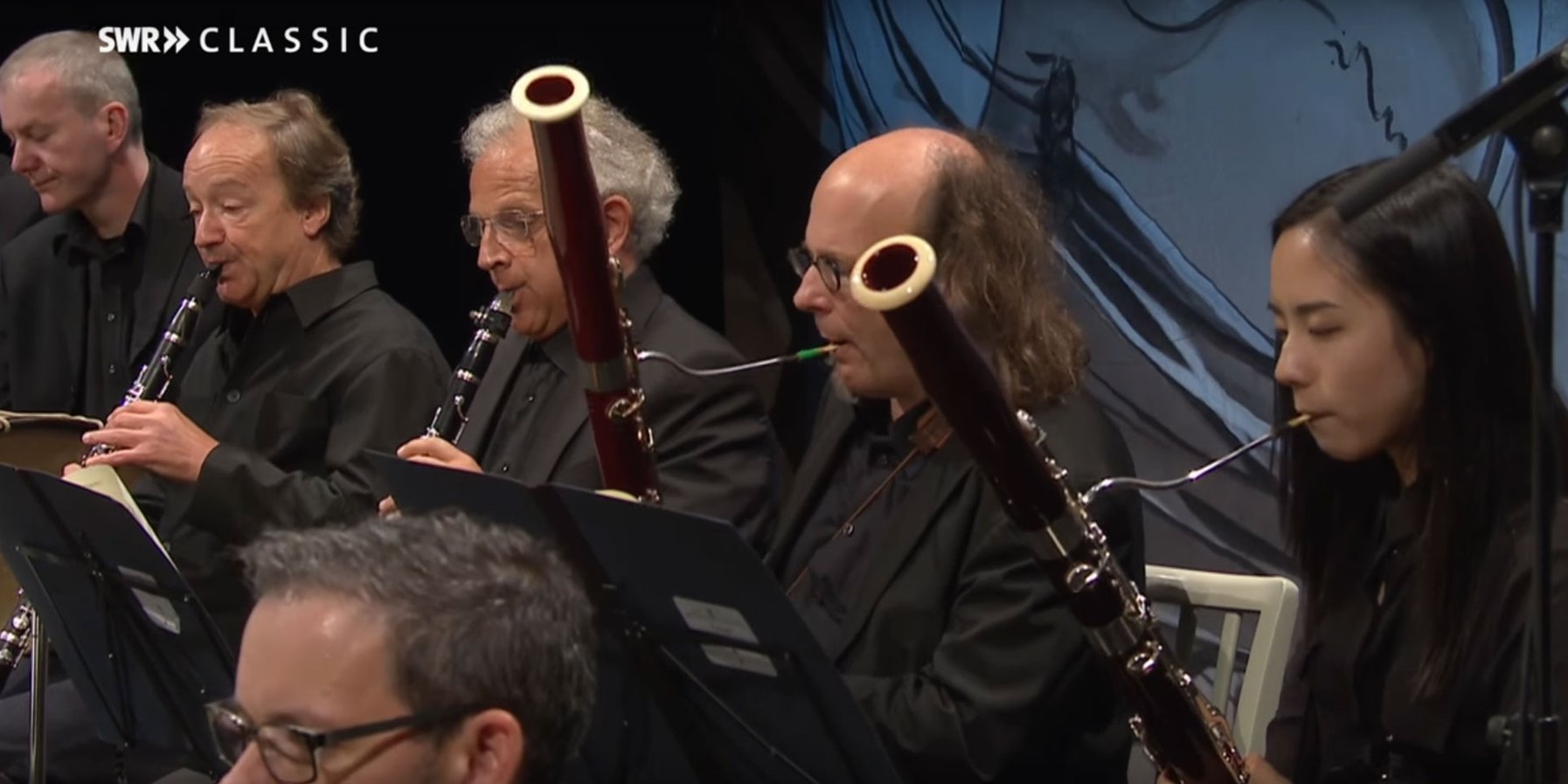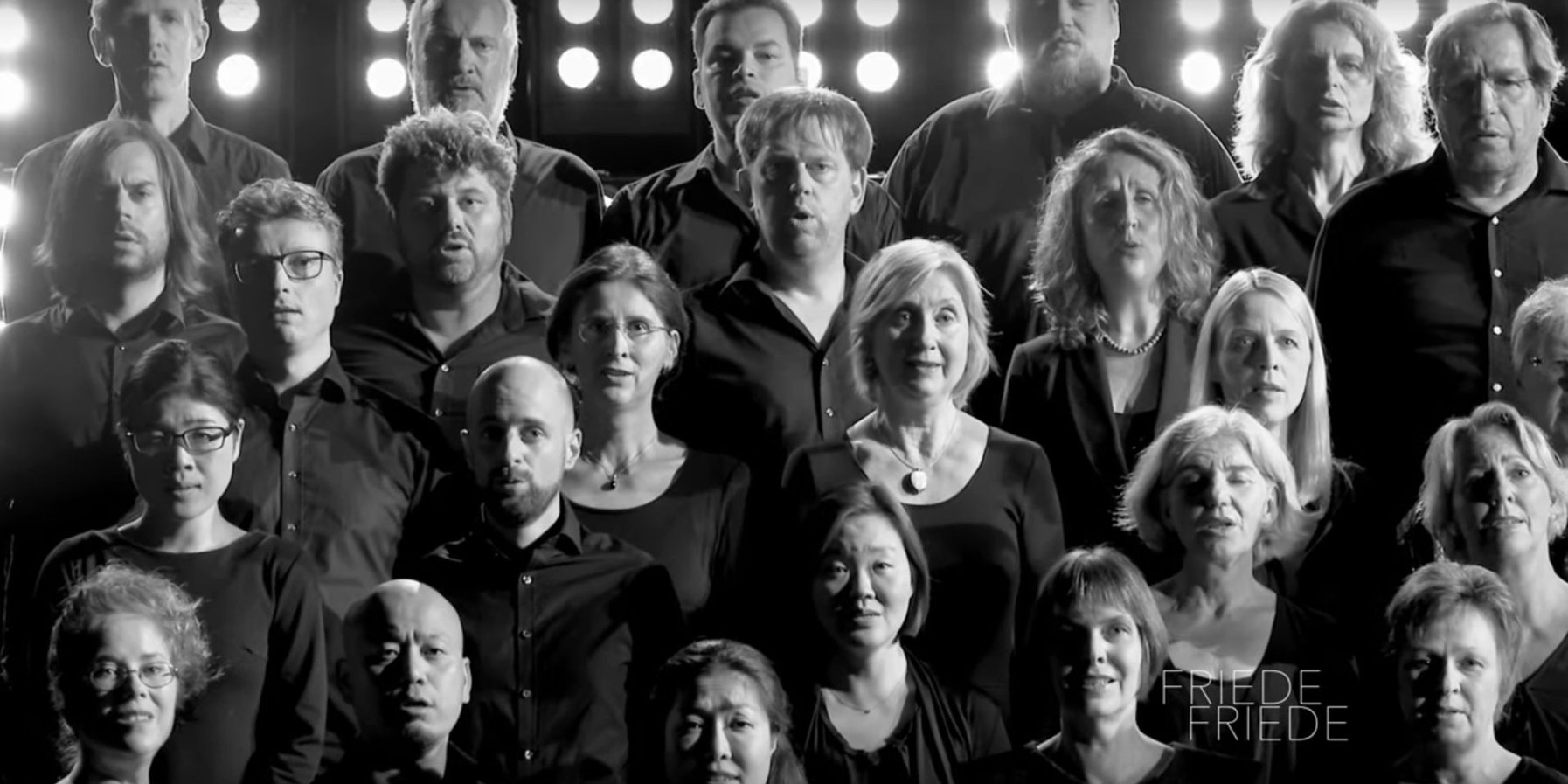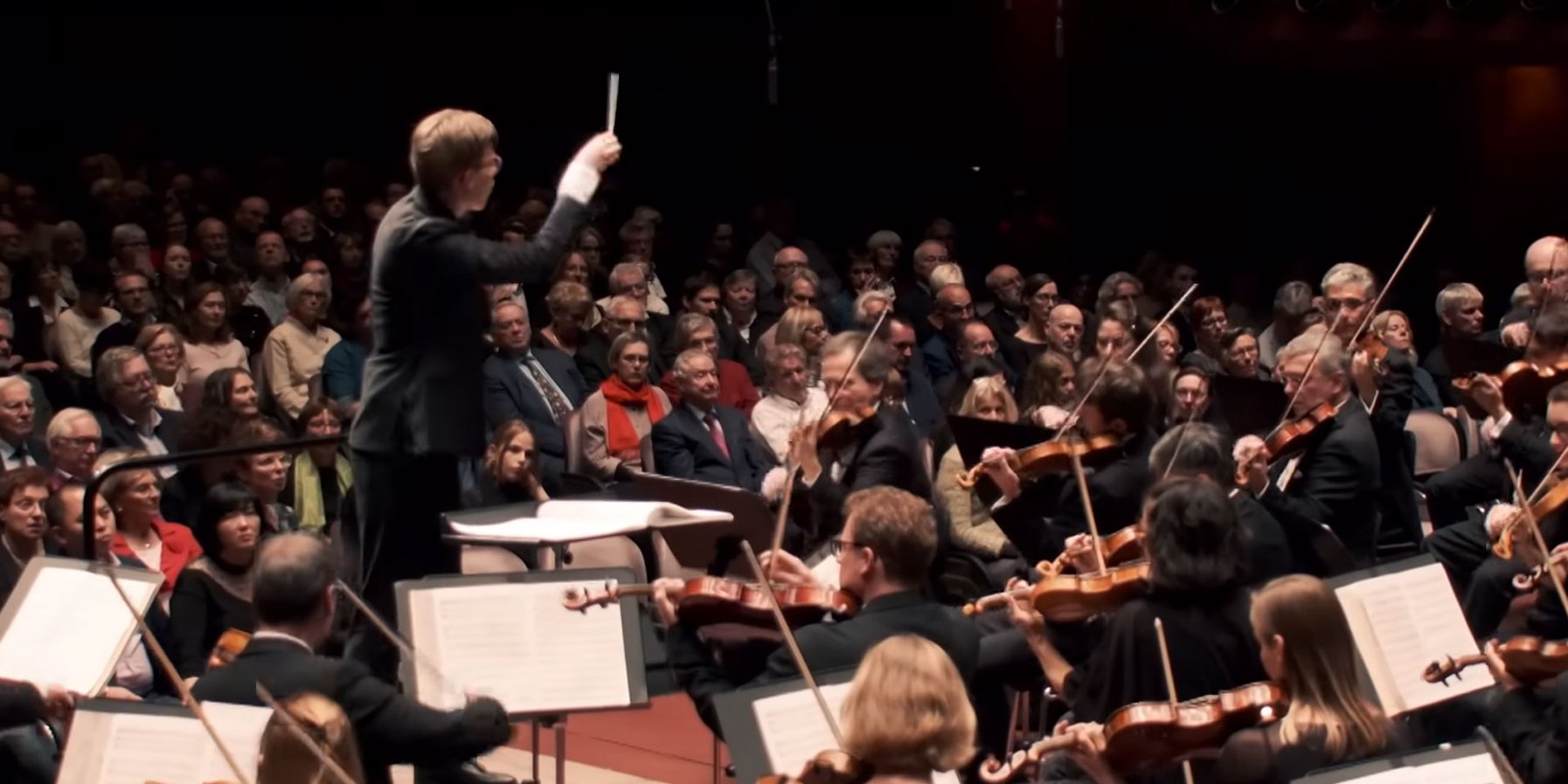Text: Friedrich Geiger, 14.02.2024
Suppose you were a composer and were commissioned to write two pieces, one called »War« and the other »Peace« - you would probably finish the first one faster. War, which has always been closely associated with music for military purposes, has an unmistakable acoustic signature that has been reproduced time after time since the first music was composed.
International Music Festival Hamburg
Programme highlights to close the season: in this edition of the five-week festival, the great Hamburg orchestras and star guests explore the theme of »War and Peace«.
Composing war
With the publication of his well-known chanson »La guerre« (La bataille de Marignan) in 1528, Renaissance composer Clément Janequin firmly established the so-called »battaglia« genre. Its stylistic devices include battle noises, signals, gunshots and similar sounds of war. This tradition extends to the present day via great orchestral works like Beethoven’s »Wellington’s Victory or the Battle of Vittoria«, Tchaikovsky’s »Ouverture solennelle 1812« or Shostakovich’s Symphonies Nos. 7 and 8, which were both composed during the Second World War.
One cannot help but marvel at the many ways in which the temporal and spatial art of music can depict conflicts. Different keys, rhythms or musical themes can be juxtaposed, even representing specific parties, e.g. by borrowing from national anthems. Dramaturgical models, such as the progress »through night to light« established by Beethoven in his Fifth Symphony, evoke a war culminating in victory. Approaching threat can be visualised by increasing volume, the military sphere by appropriate instrumentation. In 1794, Joseph Haydn imitated an army band so unmistakably with timpani, triangle, cymbals and bass drum in the second and fourth movements of his 100th Symphony that the nickname »Military Symphony« is essentially superfluous.
Haydn: »Military« Symphony (Excerpts from the second movement)
Composing peace – only via detours?
But how do you compose peace? Unlike the roar on the battlefield, peace is difficult to depict in music because it has no specific sound. And if you define it merely as the absence of war, then basically any music that doesn’t sound martial fits the definition.
So it’s no wonder that the history of musical genres features no peaceful counterpart to the battaglia, making detours necessary. Some pieces labelled as »peace music« are basically battaglias in disguise: they avoid the problem of setting peace to music by depicting the decisive battle that ended the war instead.
The desire for peace
At best, relevant passages could be mentioned in the liturgical framework of the mass, namely the »Et in terra pax« (»And peace on earth«) in the »Gloria« (extensively developed in Johann Sebastian Bach’s Mass in B minor, for example) and the »Dona nobis pacem« (particularly dramatic in Beethoven’s Missa solemnis). These entreaties were also occasionally set to music in their own right – but here, for all their urgency, the focus is on the desire for peace rather than on peace itself.
Beethoven: Dona nobis pacem (Missa solemnis)
The loss of peace
The musical lament about the loss of peace and the horrors associated with it is another example of a detour. It reached a peak during the Thirty Years’ War, as documented by collections such as the »Musicalische Friedens Seufftzer« by Johann Erasmus Kindermann (printed in Nuremberg in 1642) or the »Krieges-Angst-Seufftzer« by Johann Hildebrand (Leipzig, 1645). But determined protest against the war also found harrowing expression in numerous works denouncing terror and crime and thus advocating peace. Bohuslav Martinů’s orchestral work »Memorial to Lidice«, composed at the height of the Second World War in 1943, recalls the merciless extermination of the Czech village of Lidice by the Nazis a few months earlier, and calls for a fight for peace with its echoes of the »Dies irae«.
Like Martinů, countless musicians themselves have been affected by war, either sufferung its effects at home or going into exile. Olivier Messiaen wrote his »Quatuor pour la fin du temps« in 1940/41 as a prisoner of war in the German PoW camp in Görlitz for the four instruments available there. The world-famous Russian-Ukrainian composer Vladimir Tarnopolski (*1955) had to give up his professorship in Moscow in April 2022 and fled to Munich, where he currently teaches as a visiting professor at the College of Music and Drama: he is just one of many artists currently affected.
Texts about peace
Musical peace can best be given concrete form by a corresponding text, an option that Arnold Schönberg chose at the beginning of the 20th century for his moving choral piece »Friede auf Erden« (Peace on Earth), based on the poem of the same name by Conrad Ferdinand Meyer. Schönberg managed to create the paradox of a monumental miniature, in which he contrasted the eternal strife amongst humanity with the ideal of peace through the skilful contrasts of dissonance and consonance, of polyphonic passages and harmonious chords.
In instrumental music, on the other hand, nature often serves as a symbol of peace. The third movement of George Frideric Handel’s famous »Fireworks Music« of 1749 is entitled »La paix«, and celebrates the Peace of Aachen; here, the score is enriched with echoes of forest scenes and pastoral idylls. And towards the end of the First World War, the composer Nadia Boulanger gave shape to her longing for peace and tranquillity in »D’un matin de printemps«, a delicate depiction of a spring morning.
Harmony – the power of bringing things together
It is true that peace itself can hardly be portrayed in a musical composition. But there is a more abstract potential inherent in music itself that enables it to directly depict the essence of peace. If we trace the now hackneyed concept of harmony back to its etymological roots, it describes a special force. It arises when different, divergent or even conflicting things are brought together. Ancient Greek mythology moulded this idea into Harmonia, the goddess of harmony, who was the issue of Ares, the god of war, and Aphrodite, the goddess of love. The philosopher Heraclitus then explained the essence of harmony using the taut string of the bow and the lyre, a musical example now 2,500 years old. So it made sense for the music theorists of antiquity to describe the combination of different sounds as harmony, a definition that has held good to this day.
»The most beautiful harmony is created by bringing opposites together.«
Heraklit
Music constantly reminds us that opposites do not necessarily have to be bitterly fought over, but can come together to create something new, something that draws its energy from their differences. The American composer Charles Ives proved this with his epochal Fourth Symphony, composed largely between 1910 and 1916 for a gigantic orchestra, two conductors, choir, a distant ensemble and distant choir, as well as percussion distributed throughout the hall. Ives brought together widely differing layers and all kinds of music to create a fascinating world of sound, which we find harmonious precisely because of its simultaneous diversity. But Bach’s energetic, divergent harmonies, the dramaturgy rich in contrast of Beethoven’s sonata movements, Gustav Mahler’s grotesque scherzos or the individual improvisations of a jazz band – these are also aesthetic negotiations on the power of differences.
The power of diversity
Music can teach us what constitutes peace: it is more than the absence of war, more than undisturbed tranquillity – it has its own dynamic. It is about the power that arises from conflicts resolved, about the beauty of difference and the energy that the clash of opposites generates. Real peace is therefore only possible in an open society that sees differences not as a threat, but as an opportunity.
Such peace must be guarded and vigilantly defended. For even the enemies of such a society like to turn to music, especially when it deals with war and peace. The works in question send out gripping, convincing messages, precisely because of the combination of strong emotions and ambiguity. But this ambiguity also offers itself to abuse. All over the world we encounter a strategy where an authoritarian agenda as is presented as »resistance« and legitimate »struggle« against alleged oppression, and against this backdrop relevant compositions are detached from their original historical context and reinterpreted for propaganda purposes.
The danger of reinterpretation for propaganda’s sake
For example, the Putin regime has been systematically exploiting Shostakovich’s Seventh Symphony, the so-called »Leningrad Symphony«, for its own purposes since the 2008 Georgian War, if not before. Under the appalling circumstances of the German Wehrmacht’s blockade of Leningrad in 1941, Shostakovich wrote a stirring appeal for resistance into the score.
Under Putin, the overwhelming impact of the work was appropriated for propaganda purposes, in order to reinterpret a war of aggression, driven by Great Russian ideology, as a war of resistance against alleged »Nazis«. Numerous performances are intended not only to mobilise the Russian people in this spirit, but also to convince other countries that the war is legitimate. When dealing with such an existential topic as war and peace, then, we need to pay careful attention to who is arousing the strong feelings that such works trigger in us, and to what end.








